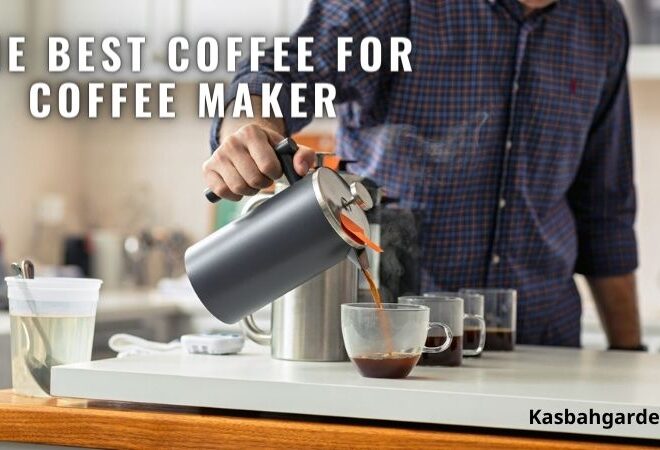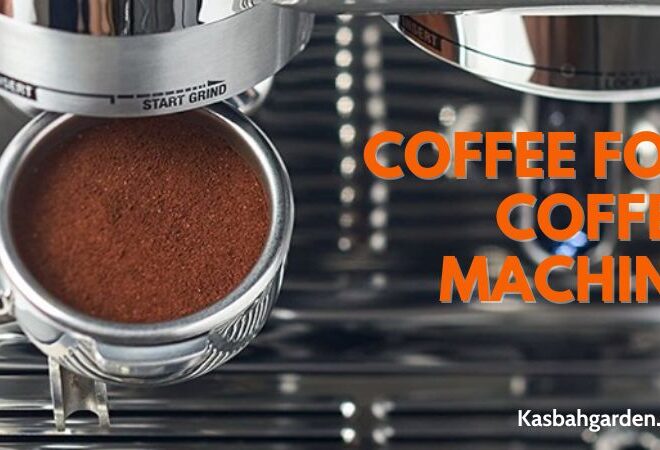Find Your Perfect Brew: Best Coffee Choices for French Press
When it comes to brewing the perfect cup of coffee, the French press method stands out for its simplicity and the rich, robust flavor it can produce. However, not all coffee is created equal, especially when it comes to this particular brewing technique. In our latest article, “Best Coffee For A French Press,” we dive deep into the intricacies of selecting the ideal coffee beans that will elevate your French press experience from ordinary to extraordinary.
Our expertise in the world of coffee brewing is built on years of experimenting with various beans, grind sizes, and brewing times to understand what truly makes a difference in the cup. This article doesn’t just list coffee recommendations; it provides a comprehensive guide on why certain beans, roast levels, and grind coarseness work better in a French press compared to others. We reveal the science behind the extraction process unique to this brewing method and how it influences the flavor profile of your morning cup.
But why should you care about the type of coffee you use in your French press? Because the right choice can transform your coffee from a mere caffeine fix into a full-bodied, sensory experience. Whether you’re a seasoned French press enthusiast or new to this brewing method, our insights will help you understand the nuances of coffee selection and preparation, ensuring every cup is a masterpiece.
Curiosity piqued? Join us as we explore the best coffee for a French press, uncovering hidden gems and guiding you towards making an informed decision that suits your taste preferences. Prepare to embark on a journey that will not only enhance your appreciation for coffee but also equip you with the knowledge to brew the perfect cup every time.
A Brief History of the French Press
The French press has been around since the early 1900s, but didn’t really catch on in the US until the 1960s and 70s. Its design is simple: hot water and coarse ground coffee are combined in a cylindrical beaker and steeped together. A built-in plunger with a fine mesh screen is then used to separate the grounds from the brewed coffee.
This full immersion brewing fully extracts coffee oils and soluble compounds, resulting in a complex, intense brew. The mesh screen allows us to experience these flavors that a paper filter would otherwise trap. No other brew method can replicate the richness and mouthfeel of a French press.
Selecting Your Ideal French Press Coffee Beans

Choosing the right coffee bean varietal and roast level is key to crafting your perfect cup. Let’s explore how coffee origin, processing method, and roasting impact flavor.
Arabica vs Robusta Beans
The two main commercial coffee species are Coffea Arabica and Coffea Canephora (commonly called Robusta). Arabica beans have a sweeter, more nuanced flavor profile while Robusta varieties offer a harsher, earthier taste and contain nearly twice the caffeine.
Arabica is ideal for French press since it highlights the delicate coffee qualities that make this brew shine. Robusta is usually reserved for high-caffeine products and as a filler in cheap coffee blends.
Single-Origin vs Blends
Single-origin coffees allow you to distinctly taste the terroir of an individual farm or region. From floral and fruity East African coffees to chocolaty Indonesian varieties, single origins showcase unique characteristics.
Blends combine beans from multiple regions to create complex, balanced flavors. Roasters expertly select and mix origins to complement each other.
For French press, single-origins make an excellent choice to appreciate the distinct profile of each bean. However, blended coffees can also be optimized to bring out rich, full-bodied qualities.
Processing Method
How the fresh coffee cherry is processed after harvesting significantly influences the bean’s final flavor. Here are some top processing methods:
- Washed – Fruity, bright, clean. Cherries are pulped and soaked in water to remove mucilage before drying.
- Natural – Sweet, with pronounced fruit notes. Dried inside the cherry with mucilage intact.
- Honey – Balance of washed and natural. Dried with some mucilage left on.
Natural and honey processing types tend to yield more body and intensity for French press brewing. But don’t be afraid to experiment with washed beans as well.
Roasting: Light, Medium and Dark
Light Roast:
- Lavazza Tierra Organic: An organic blend of Arabica beans from Africa and Central and South America, featuring fruity and flowery tasting notes.
Medium Roast:
- Allegro Coffee Early Bird Blend: A medium roast organic coffee with hints of cocoa and nuts for a warm, deep flavor.
- Peet’s Coffee Medium Roast: A smooth and balanced blend with notes of caramel and cocoa, made from 100% Arabica beans sourced from Central and South America.
Dark Roast:
- LifeBoost Coffee Low Acid: Single origin, organic, Fair Trade, and non-GMO coffee, suitable for sensitive stomachs and those seeking a robust flavor.
- Death Wish Coffee Medium Roast: A dark roasts coffee with a bold flavor, providing a caffeine boost.
Specialty Options:
- Macamania Macadamia & Coconut Flavor: A flavored coffee with a bold base and sweet touches of macadamia and coconut.
- Black Tuxe Premium Ethiopian Coffee: A medium roast with smooth floral tones and chocolate undertones.
When choosing coffee for a French press, aim for a medium grind size, avoiding finer grinds that could lead to sediment in the final brew. Also, remember to maintain proper water temperature and steeping time for optimal results
Perfecting Your French Press Technique
Now that we understand how bean characteristics influence taste, let’s dive into brewing methods to extract the fullest flavors.
Grind Size
Grind size is one of the most important factors for nailing an excellent French press. Use a coarse grind to allow the coffee grounds to steep effectively without over-extracting. Finer grinds can lead to sludgy, harsh flavors.
Investing in a quality burr grinder allows you to customize the size precisely. Otherwise, opt for a coarse pre-ground coffee if grinding fresh is not an option.
Water Quality
Since water makes up the bulk of your brew, its mineral content and pH drastically impact taste. The ideal is neutral pH water free of off-flavors. Filtered water is a good option, but bottled spring water also works in a pinch.
If tap water tastes heavily chlorinated or minerally, use filtered or bottled. Scale build-up from hard water can quickly damage your French press over time.
Water Temperature
The Specialty Coffee Association recommends brewing coffee with water between 195-205°F. Lower temperatures under-extract while higher heat burns the coffee.
Use an instant-read thermometer to check your kettle or water first. This step is crucial to draw out clean sweetness and avoid astringent flavors.
Coffee to Water Ratio
The standard French press ratio is 1:12 to 1:16 coffee grounds to water. For example, 60g of coffee per 1 liter of water. This ensures adequate extraction and flavor saturation without over-diluting the brew.
Adjust the amount of coffee higher or lower based on your taste preferences and the coffee’s strength. Bolivian or Sumatran beans may allow more coffee per water for a bolder cup.
Steep Time
Once hot water is added to the French press, steep time allows flavorful compounds to fully extract. Recommended time is 4-8 minutes.
Short steeps under-extract while excessive time releases bitter elements. Taste test shorter and longer times with new beans to identify the ideal duration.
Plunger Technique
When your timer goes off, run the plunger’s mesh screen slowly through the brew to separate the grounds from the liquid.
Plunge gently to avoid stirring up sediment. Allow grounds to settle a few seconds before pouring. Swirling the carafe before pouring also helps leave grounds behind.
Advanced Equipment and Techniques

Looking to take your French press skills to the next level? Here are some advanced upgrades.
Quality Materials
French press construction affects durability and heat retention. Opt for stainless steel, ceramic, or double-walled glass rather than plastic. They allow brewing at hotter temps for fuller extraction.
Insulated Carafes
Insulated, double-walled stainless steel or glass carafes maintain optimal brewing heat longer while also keeping your coffee hot when serving. Brands like Espro, Frieling, and Coffee Gator offer excellent insulated presses.
Metal Filters
Mesh metal filters allow more coffee oils and insoluble particulates to pass through compared to paper or nylon screens. Expect a texture-rich cup.
Extended Steeps
Some coffee enthusiasts experiment with 12+ hour overnight steeps in the fridge. Make sure to use a coarse grind size and filtered water. This extracts a super smooth, strong cold brew-style concentrate.
Advanced Kettles
Variable temperature kettles allow hitting the ideal 195-205° range precisely. Models from Fellow, Cosori, and other brands connect to phone apps for custom heating profiles.
Enjoying Your Press Around the World
While the French press began in Europe, unique cultural spins on this classic brew method have popped up globally:
- Iced Vietnamese coffee features French press brewed dark roast Vietnamese coffee. Sweetened condensed milk served on the side is poured into the chilled coffee.
- North African mint coffee traditional involves making strong French press coffee and then pouring it into a glass filled with fresh mint leaves.
- Turkish coffee, popular in the Middle East, is sometimes brewed using a French press before being served from a traditional copper cezve.
- The French press is a fixture on European breakfast tables for enjoying café au lait – a perfect balance of bold coffee and steamed milk.
So put your own cultural spin on French press coffee – try pairing it with Hawaiian coconut syrup, Mexican cinnamon, or your other favorite flavors!
Coffee and Health
Coffee beans contain hundreds of compounds that may influence health, but study results are often mixed. Here’s a quick look at key research findings:
- Cafestol and kahweol are compounds found in coffee oils that may increase LDL cholesterol levels. Using a paper filter traps most and reduces this effect.
- Antioxidants like chlorogenic acids offer potential anti-inflammatory benefits. However, roasting depletes some antioxidants.
- The stimulant caffeine provides increased alertness but may cause anxiety or insomnia in some. Caffeine levels vary by roast, brew method, and bean type.
Moderating intake based on your individual needs and tolerances is wise. Those with hypertension or anxiety disorders should exercise particular caution. Overall, coffee may be reasonably incorporated into a healthy lifestyle for most people.
Sustainably Sourced Beans
As coffee demand grows, sustainability practices ensure supply while protecting the environment and farmers’ livelihoods. Seek out companies that align with your values:
- Organic coffees utilize environmentally friendly farming methods without synthetic pesticides and fertilizers.
- Fair Trade guarantees farmers fair wages and safe working conditions. Only cooperatives are certified, rather than individual farms.
- Direct Trade involves roasters forming direct relationships with coffee producers to mutually agree on prices and farming practices. This supports small farms.
- Shade-grown coffee is grown under a canopy of trees, preventing deforestation and providing natural pest control.
- Rainforest Alliance sets standards for conserving forests and wildlife while sustaining local communities.
With some research, you can find environmentally sustainable beans that also make your French press shine. It’s truly a win-win scenario.
Storing Beans for Freshness
Proper storage preserves the volatile compounds that give coffee its aromatics and flavor. Follow these guidelines:
- Store beans in an airtight container out of sunlight. Ceramic, glass, or metal works best.
- Cool, room-temperature environment. Refrigeration introduces unwanted moisture.
- Use within 1 month of roast date for optimal freshness, noted on the bag.
- Buy smaller batches more frequently if you don’t go through beans quickly.
- No freezer storage, which damages cell structures.
With proper care, you’ll be rewarded with the lively, nuanced taste that drew you to French press in the first place.
Maintaining Your French Press
A well-maintained French press delivers better flavor and extends its useful life. Follow this routine:
- Disassemble and hand wash all parts after each use. Do not put the glass beaker in the dishwasher due to thermal shock.
- Inspect gaskets & filters and replace any worn parts for a tight seal.
- Descale regularly with white vinegar to prevent mineral buildup.
- Preheat with hot water before brewing to prevent glass thermal shock.
- Check for cracks in glass and stop using immediately if any form.
With simple care, your French press will brew exquisite coffee for years of daily service. Time to pour yourself a well-deserved cup!
Pairing Foods with French Press Coffee
The captivating flavors of French press coffee make an excellent partner for breakfast pairings:
- Buttery croissants – the lush mouthfeel plays off the richness of the coffee.
- Smoked salmon bagels – the briny fish contrasts nicely with the earthy coffee.
- Chocolate chip muffins – the bittersweet chocolate complements the slight bitterness.
- Vanilla yogurt parfaits – the sweet creaminess offsets the potent brew.
For dessert, consider these combos:
- Chocolate-dipped biscotti – the intensity stands up to the strong coffee.
- Espresso brownies – the mocha theme blends perfectly.
- Coffee ice cream – a scoop brings out fruity notes in the coffee.
Pairing French press coffee with food is an exciting way to experience new dimensions in both.
The Endless Adventure of French Press Coffee
We’ve only just begun to tap into the potential of French press coffee. Experiment with different beans, roasts, coarseness settings, steep times, and ratios to find your ultimate cup.
This classic manual brewing journey rewards those with a spirit of exploration and discovery. Let your taste buds navigate the nuances as you hone technique through first-hand experience.
Savor each step – breathing in the aroma before sipping, allowing the luxurious coffee oils to coat your tongue. The ritual offers a multi-sensory meditation.
So grab your French press, a bag of quality beans, and let the adventure unfold. A lively cup brimming with possibility awaits. What memories will you brew today?



Best Ground Coffee For Use In a French Press?
Are you using coffee ground for drip machines in a French press? I’d highly recommend fresh beans and a grinder. Or at least get them ground for French press.
Just got a French Press! Which coffee to use?
I personally prefer darker roasts in French Press, but make absolute sure your grind is on the coarser side. They’ll be sitting in there for a while so you can get away without a fine grind, but most importantly the finer it is the more sediment you get in your cup.
Just got a French press!!! what’s your fav/best coffee to use??
Any coffee that you like will be good! I just started using one again and have had some delicious medium roasted Ethiopian and light roasted South American blends. Though if I might be facetious, I would say that they should always be coffee beans, and not coffee grounds